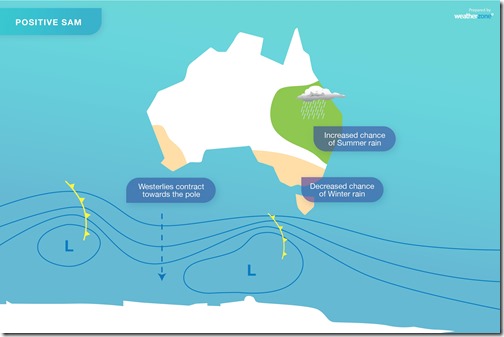Some background to this article
On Friday 30th June 2017, Paul McArdle posed the question on WattClarity of “Where’s the wind gone? NEM-wide wind farm operation lowest in 5 years (maybe ever, on like-for-like basis?)”. This article generated some interest with our readers, and elsewhere.In this article, Paul invited meteorologists to provide more context to our readers that would help them understand climate factors that would contribute to the observed drought.
Josh Fisher, from WeatherZone, has answered that call with the following article. We thank him for this, on behalf of our readers.
During June, abnormally high pressure over southern Australia and a resulting lack of cold fronts last month saw large swathes of the country register significantly below average rainfall, warmer than usual days and cool nights during June. Another notable feature of the higher pressure and lack of significant cold fronts, was a lack of wind across southern Australia.
This pattern during June was largely driven by a climate driver known as the Southern Annular Mode (SAM). The SAM describes the north–south movement of the westerly wind belt that circles Antarctica, dominating the middle to higher latitudes of the southern hemisphere.
Over the past month, the SAM remained predominantly in a positive phase. During a positive phase of SAM, the belt of westerly winds and fronts that circulate the Southern Ocean tend to contract closer to the pole and Australia can see less frontal activity impacting the mainland. As such, winds tend to be weaker over southern Australia, which is what we saw during June.
The SAM is remaining positive into July with strong high pressure systems expected to dominate in the weeks to come. There are some indications that the positive SAM could begin to breakdown during the second half of July, which could see potential for more frontal activity.
Here’s two specific questions I was asked, and my responses:
Q1) How common is this SAM? When was the last time it happened? How predictable is it?
The SAM is a mode of atmospheric variability that oscillates between phases on a weekly to monthly scale. The SAM is influenced by other large scale climate drivers such as the El-Nino Southern Oscillation, though predictability is generally limited to a few weeks in advance.
The SAM has predominantly been in a positive phase since autumn, previously having been in a negative phase during late 2016 into the start of 2017. The negative phase during this past summer contributed to sustained heat events in New South Wales during December and January, while seeing cooler changes affecting far southern Australia leading to less extended heat events.
Q2) Am I correct in inferring the winds in the northern half of australia are unaffected (QLD and northern NSW)?
While the strong high pressure systems we have been seeing this winter have led to lower wind speeds in southern Australia, high pressure systems such as these during the winter can direct stronger southeasterly winds over northern parts of the nation.
About our Guest Author
| Josh Fisher is Head of Energy & Renewables at WeatherZone.
Weatherzone is a product of The Weather Company, established in September 1998 initially in response to a demand from television broadcasters for more sophisticated weather programming. The Weather Company is a leading commercial weather information provider to media and Internet organisations serving customers in industry, agriculture, government, recreation, education and consumer markets. The Bureau of Meteorology (BoM) supplies weather information and The Weather Company converts this information into computer ready data, specialised forecasts, TV or web ready graphics and scripts You can find Josh on LinkedIn here. |




Paul
Thanks for getting this – most informative
Thanks Paul,
Always good to have some insight into what’s driving our weather now that our energy markets are so interrelated to weather.
What about Son of Sam or even Uncle Sam?
Why is it so hard to find what the southern annular mode is doing on the BOM website?
To me it is the most important predictor of rain in southern Australia particularly in winter west of the divide.